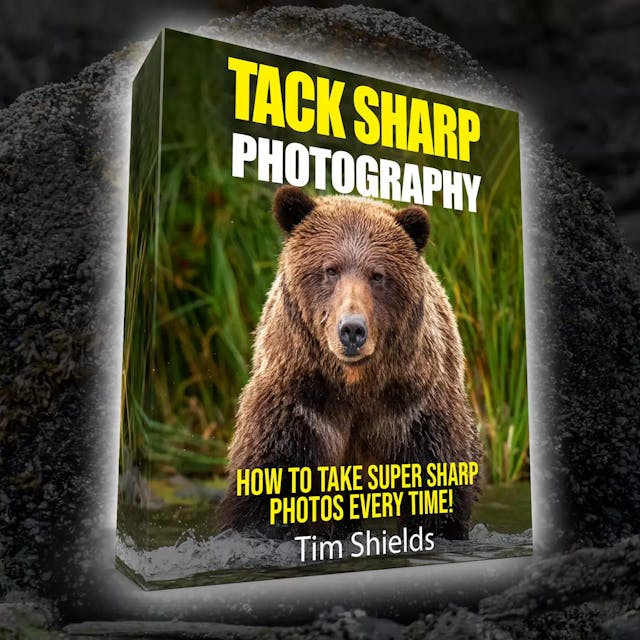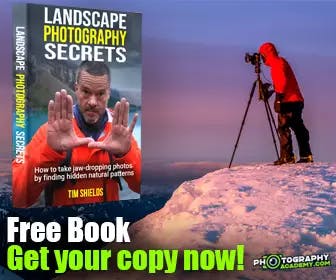Photographing the Northern Lights is an absolute dream for landscape photographers. The vast majority of the world’s population lives too far south to see them. And when they’re most visible, most of the world wants to be inside, huddled around a fire with cocoa.
For that reason, and the fact they’re impossible to plan for makes them one of nature’s cruelest phenomena. I’ve been lucky to catch them on a few occasions. But seeing a good storm requires some luck. Coming from the Pacific Northwest, getting far enough north can mean a 10+ hour journey.
But when it happens and you finally see that perfect solar storm dancing across the skies, all of your efforts become worthwhile. These events are absolutely worth traveling to see, and if you prepare properly, you’re bound to come back home with some epic images.

1. Plan to go as far north as possible
The Northern Lights are always the strongest up North. Right around the poles would be the perfect place to get out and see absolutely stunning light shows. But there aren’t exactly cheap commercial flights going to Greenland, Svalbard, or the tips of Canada. So you’ll need to find somewhere that’s remote, but not so remote that they don’t have good roads.
Iceland is one of the most common destinations because of an abundance of cheap flights from Europe and North America. As well, the island country has fairly accessible roads, and almost every citizen there is a tour guide or has a friend that’ll take you out to the best spots.
If you want to see snowy Canada, Banff National Park is an accessible place with good chances of seeing the Northern Lights. But it’s expensive, and always full of skiers. As well, you’ll have a better chance of seeing the Northern Lights in Jasper National Park, which is cheaper and is famed for being a dark sky preserve.
For the absolute best chance of seeing the Northern Lights, head up to Whitehorse in the Yukon. This small gold rush-era city has endless night skies, with some of the longest winter nights in the country. The roads are well taken care of, and it’s home to some of the tallest mountains in the country.
The best part about these locations is even if you don’t see the Northern Lights, they have some of the greatest winter landscapes in the entire world. You certainly won’t come back empty-handed.

2. Book a flight at the right time of year, and come prepared
This one is a big deal. If you want to see the Northern Lights, you have to book your trip in the wintertime. If you’re traveling far enough north to see the aurora borealis, the summer sun won’t set.
A bit further south in places like Jasper National Park, or Banff, the nights begin around 10 p.m. If there’s a good show, you might completely miss it because of the bright sky. Even if it’s not as comfortable, it’s well worth the wait to book a trip in the wintertime when the night lasts long enough.
Make sure that when you book the trip, you’re ready for the weather. No matter how cold it is outside, you can’t do Northern Lights photography from inside your vehicle. Having a good jacket, snow pants, boots, gloves, and a toque are all necessities for keeping warm and cozy. Especially considering that you might be outside for more than a half-hour, and the weather can get down to -40 depending on the region.

3. Make sure you’re driving the right vehicle for the conditions
As well, these types of photography will often take you off the beaten path. If you know that you’re going into the backcountry, you’ll need something bigger than a Honda Civic. I know because I’ve driven them before — they’re cheap, but they are not easy to get out of a snowbank.
Spend the extra money and get an SUV or a Truck that has 4-wheel drive. This way if you run into trouble, you’ll have the best chances of being able to get yourself out. As well, learn the local regulations and emergency phone numbers.
Often far north communities don’t have very good cellular service outside of the towns. Tell a friend or relative back home where you’re going to be and when you’re getting back. Then, if you don’t check in, they can send a search team to the right location. Winter is hard on all of us, but northerners know just how dangerous the conditions can be. When in doubt, talk to clerks at the front desk of your hotel, or your host about what you’ll need to plan for the conditions.

4. Have your equipment ready to photograph the Northern Lights
The good news is that the aurora is actually very bright. The lights are dancing, and they can light up the foreground in your image spectacularly. As long as you have a solid tripod, you should have no problem photographing the northern lights even with an entry-level camera.
The best photographs will come from wide-angle lenses to capture the majesty in the sky. Look for a lens like a 24mm with a large aperture like f1.8 or f/2.8 for best results. Then you’ll be surprised with how fast of a shutter speed you can use. It’s never fast enough to hand-hold, so the tripod is very important. But I typically shoot at 1/4th, or 1/15th of a second to get tack-sharp aurora photographs. Shutter speeds into the seconds or minutes will blur the northern lights in an unfavorable way. So be sure to make the shutter as fast as possible without bumping up the ISO too much.
If you’re like me, and you find that your first shot is always bad, because you forgot to check your camera settings, take a look at this checklist I made to make sure I don’t forget.
When it gets cold out there, you may need to bring some extra batteries. One that would normally get you through 8 hours of shooting can call it quits after a half hour. So bring two or three extras. Keep them in an inside pocket in your jacket so they stay fresh, and rotate them out as needed.
If you want to capture the stars as well as the northern lights, you’ll need to bracket your shots. Best results may require you to wait until the light show has dimmed, or gone away. This way, you’ll have an easy time combining the photographs using layer masks in Photoshop. Automated methods, like HDR in Lightroom can work, but they also have a tendency to eat stars and remove parts of the aurora.

5. Make a backup plan
This is the most important step of all. If you don’t have a plan, there’s a good chance that you’ll come home cold and empty-handed. The northern lights are nighttime photographs. Any location that would make for a good Milky Way or astrophotograph will make an excellent aurora photograph.
Look for epic night-time photographs on Instagram. Once you find one that you like, use the location on top of the image to search for it on Google Maps. Look to find out how far it is from the nearest major center so you can plan if this one is feasible for you. Many night-time locations require at least an hour of driving out of the city so that you don’t get light pollution in the frame. If in doubt, look up a Light Pollution Map, to find where the nearest dark sky will be.
A little bit of research goes a long way. Knowing how far a location is from your hotel can be critical to getting exactly where you want to be when you want to be there. Aurora forecasts can be made a couple days in advance, but the best ones will only give you a half hour notice of an intense storm. If it’s short, you’ll need to get there at the critical moment to capture that beauty, instead of getting stuck taking a photo on the side of the road.
I wrote a longer article that goes far more in depth on how to plan a photograph here. The best photographers always prepare as much as possible for the moment, so that when they get there, they aren’t just winging it.
Once you make a plan and everything goes so perfectly, you’ll never go back to the way you took photos before.
Ready to learn more about photography?
 Over the years, I’ve learned photography from many websites just like this, and I’m so happy to be able to give back to the community I’ve learned so much from. If you’re stuck in a rut, and are looking to learn more to get yourself out, I’ve got a free lesson that will be helpful. I developed a four-step system to help me ensure that I’m always in the right place at the right time, and am ready for the moment. It’s helped me take some of my favorite photographs ever. Best of all, I’m giving this lesson away for free! Sign up for my online webclass today and start taking better photos without upgrading your equipment!
Over the years, I’ve learned photography from many websites just like this, and I’m so happy to be able to give back to the community I’ve learned so much from. If you’re stuck in a rut, and are looking to learn more to get yourself out, I’ve got a free lesson that will be helpful. I developed a four-step system to help me ensure that I’m always in the right place at the right time, and am ready for the moment. It’s helped me take some of my favorite photographs ever. Best of all, I’m giving this lesson away for free! Sign up for my online webclass today and start taking better photos without upgrading your equipment!




